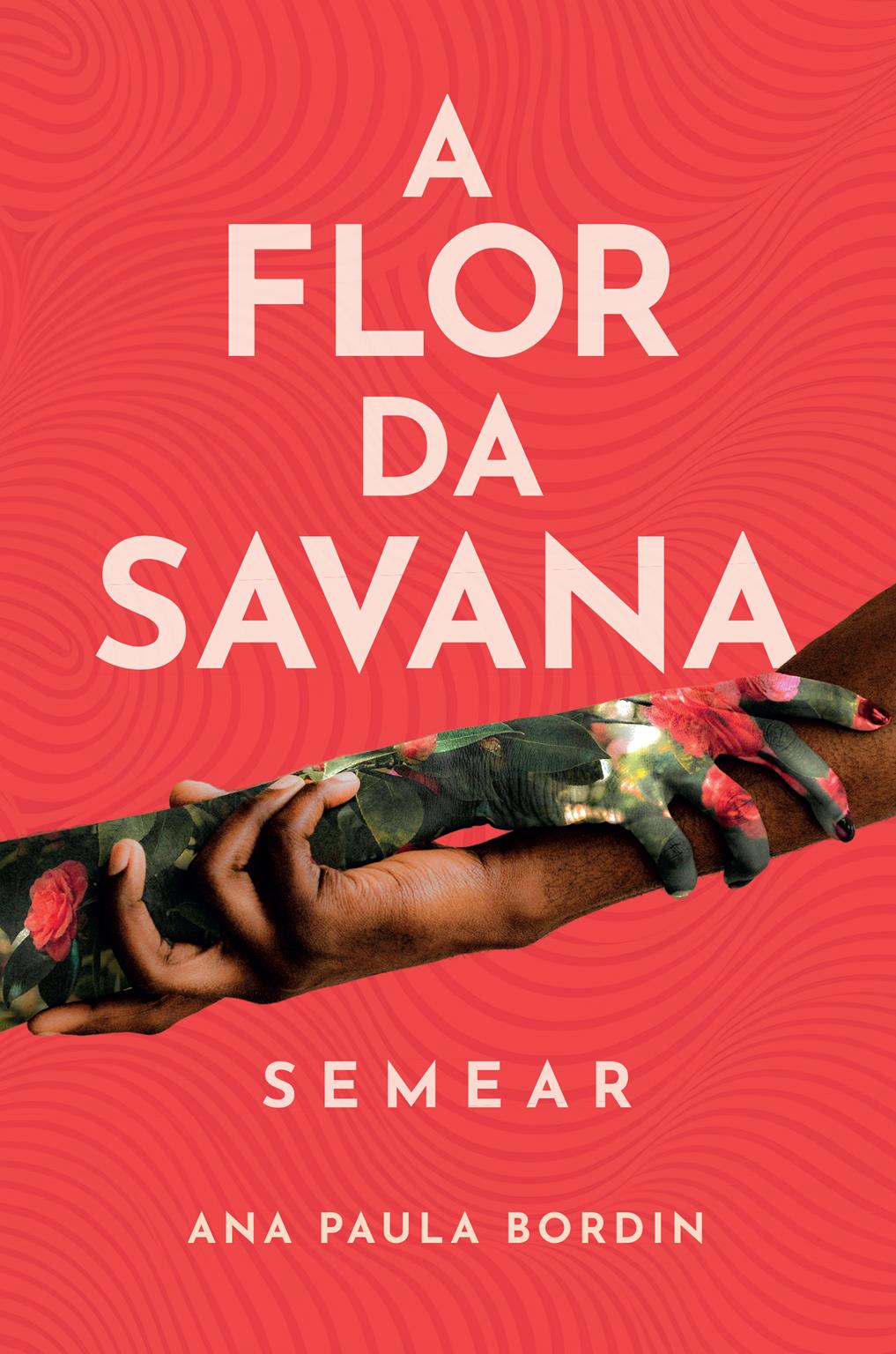
Set against the vibrant backdrop of the South African savannah, writer and psychoanalyst Ana Paula Bordin presents A Flor da Savana, a novel that intertwines passion, self-discovery and social criticism. The plot follows Izabel, a ranger who sees her professional routine change after an unexpected encounter with Martin Sipho , her previously unknown boss. The intense romance between the two reveals individual journeys marked by themes such as sexism, racism and emotional reconnection, in addition to bringing to light deep reflections on relationships, female empowerment and mental health.
With a setting inspired by the author’s experiences in South Africa, the book combines humor, irony and emotion, inviting readers to explore complex and universal issues through an engaging and transformative narrative.
What motivated you to create a protagonist like Izabel, a ranger in South Africa, and how does that setting connect to her journey?
Izabel was “born” during my trip to South Africa. It was there that I learned about the rangers and, most importantly, I noticed the lack of women in this role. Until 2013, the year of the trip, women did not lead safaris, which sparked in me the desire to bring to life a female character who could raise this discussion. This connects us to the choice of the savannah as the setting, since it has a very strong connection with the protagonist’s movement to break away from the expectations of the traditional family in which she was raised, as well as being the perfect stage for unexpected expectations to begin to be built and many others to be broken. One example is the breaking of the princess cycle that had been imposed on the character and the redefinition from her departure to such an inhospitable place. The choice of the hostile environment, as well as the exposure to a harsh reality, reflects a lot of her personality and her future decisions about whether or not to stay in this place.
What was the process of developing the relationship between Izabel and Martin, characters with such different backgrounds and life experiences?
The common thread of their relationship is precisely that they are so complexly distinct. This allows us to better understand the question of how they were formed and whether this would be a perpetual condition or not. To construct them as individuals and as parts of this, at the very least, complicated relationship, I needed to look at the gaps that each of them would present. In this way, the narrative can lead the reader not only to understand the nuances of behavior, but also to want to devour each page to get closer to the characters’ urgent needs. And from these needs, I developed their childhood, their traumas, their striking situations, the contexts that explained their “actions” in adult life and the defense mechanisms they use. It was as if I created them backwards. A delicious and intense exercise in psychotherapy, as if both were patients, and together we worked on the process of self-knowledge.
In “A Flor da Savana”, you explore themes such as sexism, racism and inequality. How do these themes intertwine in the narrative and affect the characters?
The first major challenge is to create a closer bond between the reader and the characters, showing them as beings exposed to mistakes and successes, without extremism, since the goal of this reading is to be fluid and light, even when addressing controversial topics. The narrative invites us to get to know and understand how a female ranger, who stood up against gender inequality, brings up so many issues of low (or nonexistent) self-confidence, or how a man with money and power feels so disadvantaged due to the color of his skin and the role it plays in his life. These are quick examples of how the characters address so many issues at the same time and how the narrative tends to entangle them in a way that leads us to a more detailed analysis of the social choices to which we are subjected.
Fiction provides us with this service of guided observation of what we no longer want to perpetuate as a society, and this is where the themes you mentioned fit in. I understand that, from the perception that fiction and reality merge, emerges the need to do something to save the characters who, often, are one of us or someone we love.
Izabel is going through a major personal and professional transformation. How does her search for self-knowledge reflect the reality of many women today?
Our heroine is one of the most ordinary women we could imagine. Izabel grew up in a traditional family environment where the goals for a daughter were to get a good marriage, be a good girl, well-behaved, respectable, to meet the needs of others first, including her own mother, with whom she has a rather complicated relationship, and to strive for both aesthetic and intellectual perfection, achieving the role of the ideal woman who meets the expected standards. She represents the majority, not the minority.
Izabel’s high point compared to the vast majority of women who are on this same quest is that she begins to discover that she does not need to lose her feminine instinct to break this cycle, that she can achieve great things, be herself, without ceasing to explore her femininity, without losing the connection with her own body and, above all, with her own feelings and desires. Our heroine is driven by the attempt to balance the conquest of rights without losing sight of her feminine essence, which is visceral, ancestral and needs to be respected.
The bias towards romance, immediate chemistry, the meeting of souls, companionship, learning to deal with the other part of the relationship is a great leap in self-knowledge that conflicts somewhat with reality, since the movement towards breaking up has been more abrupt without taking care of this very important pillar, which is relationships. Here I am not referring only to romantic relationships. I understand that this consideration does not please everyone, but I see it as necessary.

Female complicity is highlighted as an important element in the story. How did you explore support between women in Izabel’s journey?
Female competitiveness and rivalry have been very evident over the years in various forms of cultural expression, as if sabotage and belittling women were common practices. This has permeated many stories and yielded many awards, not only literary ones. However, what we experience more and more every day is the opposite of this: women are allies, willing to unmask this disfigured allegory of female enmity.
Daiane and Izabel’s relationship is clearly an example of how close, confident and connected women can be, even with different personalities, habits and financial situations. Throughout the entire narrative, and yes, here you can already see a hint of the next book coming, we will be able to see how the relationship of companionship and support, even if veiled, is real and happens between women who are not so close, without formed bonds of friendship, simply because we need mutual support and we know how to offer it masterfully.
It is also worth considering the point that every woman’s journey is always permeated by the journey of so many other women, starting with those who have been around us since birth. Therefore, the mother-daughter relationship is also explored as an axis that sometimes strengthens and sometimes destabilizes, especially in Izabel’s journey. It is extremely important to understand that both sides are nourished by their own beliefs, views that we need to compete to win, and this is deconstructed throughout the narrative.
How does your perspective as a psychoanalyst influence the way you approach emotional dilemmas and relationships in the book?
Each character in this saga represents in fiction a little of what we live, feel and experience as human beings in real life. The aim of the work is to awaken in each reader the sensitivity to recognize (perhaps themselves) in certain behaviors, in bad and good choices, in experiences of growth and maturity. Both the construction of the characters and the plot itself are representations of a sample, albeit small, of our psychic complexity and how much choices (not only ours) from the past (and present) reverberate in our existences and last for generations. The representation, albeit cut out, of the emotional issues was constructed based on my experiences not only as a social individual in permanent development, but also as an observer and student of human behavior.
What are the main reflections you hope the reader will make when following the story of Izabel and Martin?
The first and most important reflection I would like to provoke in the reader is the question: “How do I see myself and how does the world see me?” Because, clearly, we realize how distorted these views can be and how much we can lose ourselves in the pursuit of what we think others expect of us or what we ourselves expect. And with the clippings of social networks, this becomes even deeper and more intense.
Many other thoughts permeate my mind, especially in light of the comments I have been receiving about the book: “What kind of relationship am I in and what do I really expect from a healthy relationship?”; “Is my sexuality well-resolved, am I happy and satisfied with the way I position myself and explore it?”; “Among so many possibilities in the world, do I really am, do I do, exercise, create, feel, love (there could be several other verbs here…) what I desire or what was chosen for me?”; “Is my insecurity mine or did I let it be planted in me?”
Ultimately, the text brings up many issues that are explored in a light, subtle and even funny way, but the purpose is that each reader will feel like changing something, or intensifying or slowing down the pace of some activity. It is meant to be provocative, yes. However, I am aware that each reader will be at a stage of preparation to reach this point, but the seed will certainly be sown.
There are those who feel angry when it ends, there are those who feel curious about what is to come, there are those who perceive enchantment in the lost construction of the two. The objective was to cause an intense reaction in the reader while part 2 is in the editing process, as the reflections will be further explored in “A Flor da Savana – Colher” and we will be able to discuss these reflections further.
You used your own experiences in South Africa to create the setting for the book. How did you bring this authenticity to the setting of the narrative?
The landscapes inspired the scenes in the book in me. During the trip, the mental plan was being developed together with what I was experiencing. So I simply allowed the characters and actions to take shape and come to life in the lush settings that I was able to experience personally. It was a very natural process that happened and I just had to put it on paper, as if the story had received a great gift from it that I just had to open and take to the world. For me, an author who wanted a light text for readers, the great challenge was to represent each of those images with their magnitude and intensity through words, without being too descriptive, which could make the reading tiresome. At the same time, I also wanted to be able to transport the reader into the jeep and go on not only the safaris with us, but also the entire journey of our heroes, as if they were on a great expedition through South Africa. I hope that each reader was able to close their eyes and imagine themselves in that setting with us.
Follow Ana Paula Bordin on Instagram


